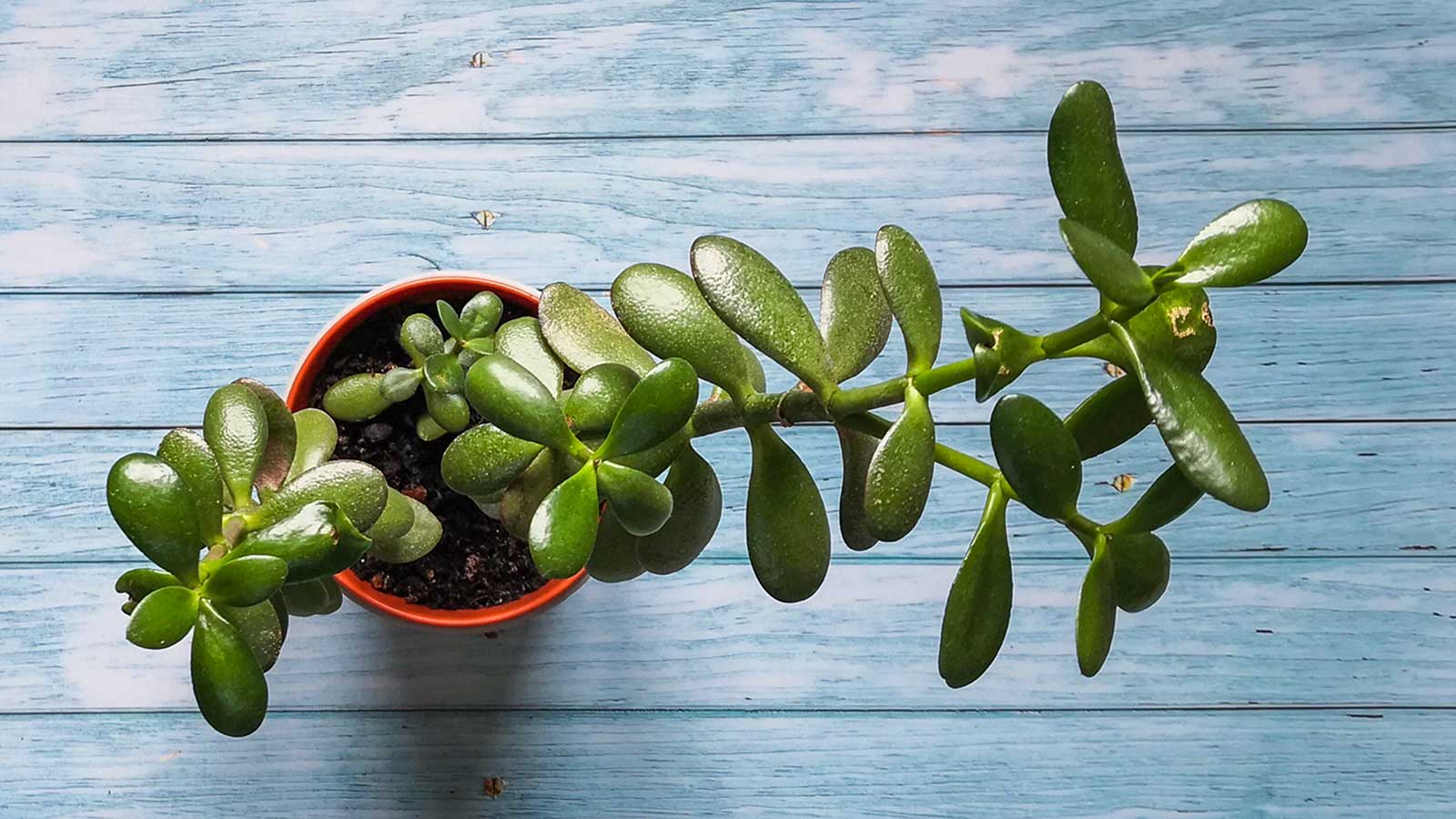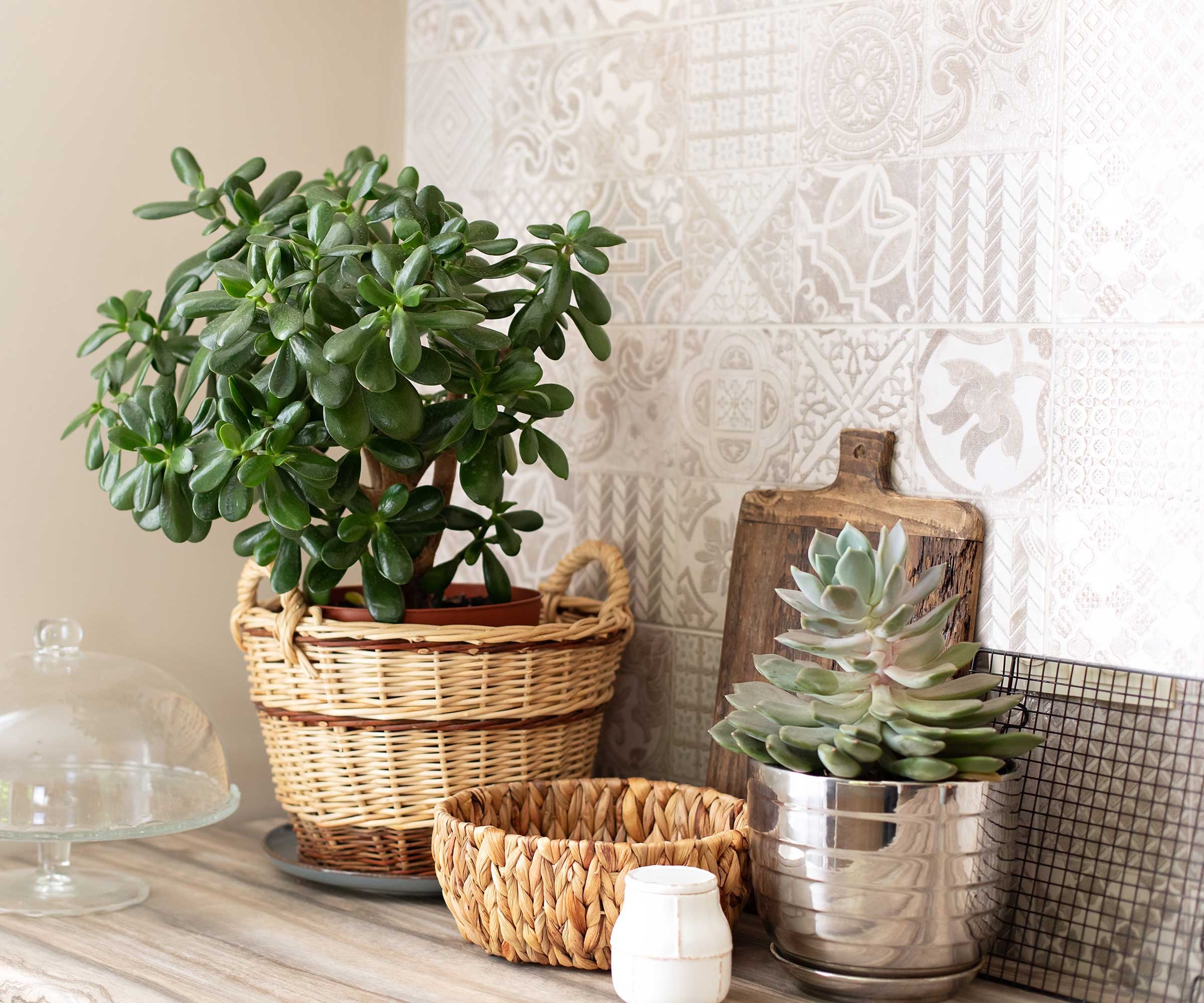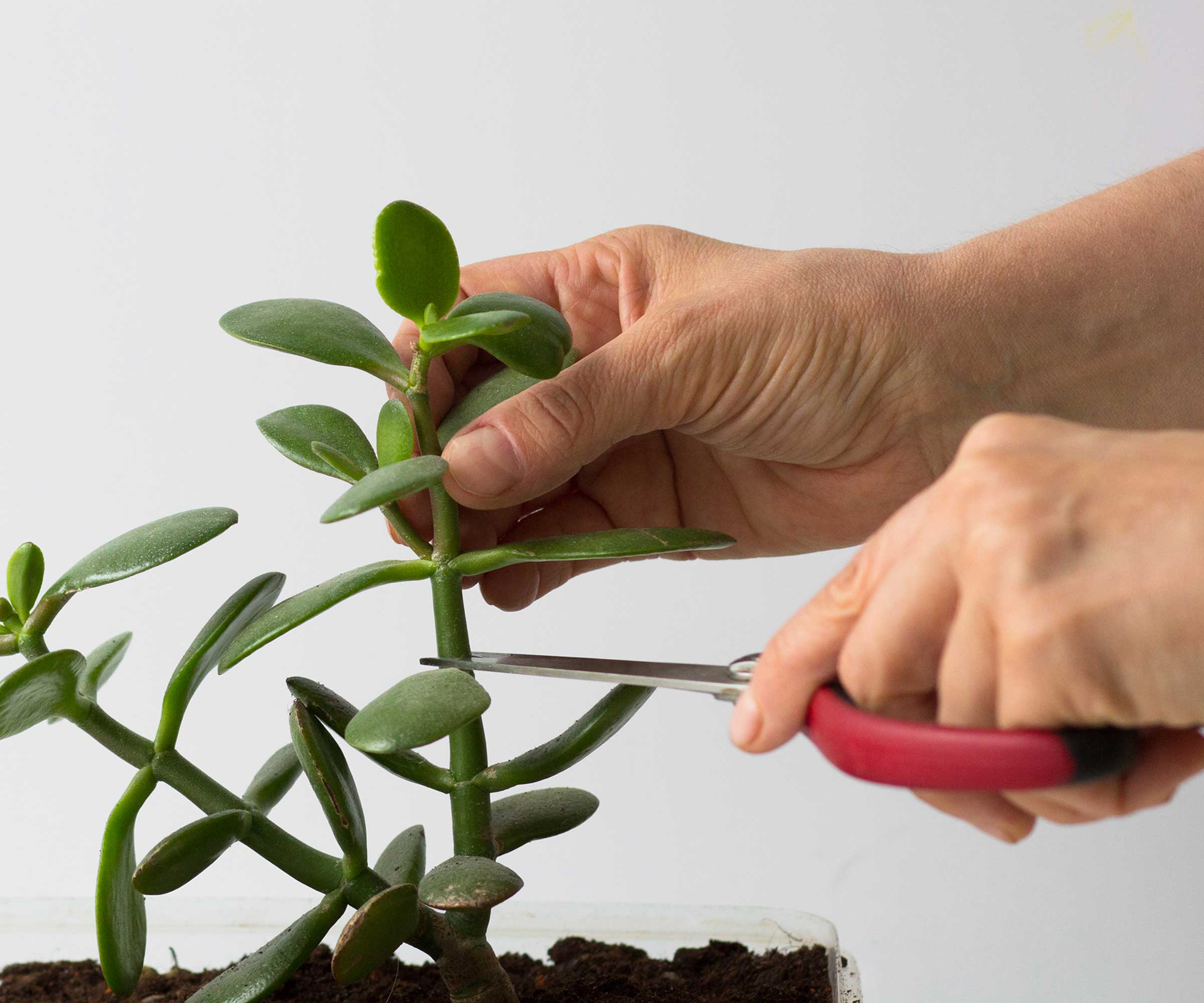How to propagate jade plants – for more of these easy-care succulents
Create more Crassula ovata for your home with these tips


Jade plants are one of my favorite houseplants due to their easy-care nature and fleshy green leaves. They have an upright form with woody stems. And, in the right conditions, they grow into small trees that look gorgeous in a conservatory or next to a sunny window. Some will even flower from time to time.
Like many houseplants, jade plants are also easy to propagate. So, if you already have one, why not try making more to add extra greenery to your indoor collection? Baby jade plants make great gifts, too – after all, they are also known as 'friendship plants'.

Well-established and healthy jade plants sometimes produce flowers
Propagating jade plants
You can propagate jade plants by taking cuttings. These can either be sections of stem or individual leaves.

These low-maintenance succulents make fabulous indoor plants
How to propagate jade plants from stem cuttings
Jade plants can be pruned during their growing season, which will help them to grow into a more compact and bushy shape. Rather than discarding the stem cuttings, you can replant them.
However, even if your jade plant doesn't need a prune, you can still snip off a section of stem or two to try this propagation method. Simply follow the steps below, and remember to use clean and sharp pruners or scissors to avoid harming the parent plant. These Gonicc 8" titanium bypass pruning shears from Amazon are a good tool for the job.
Autumn Hilliard-Knapp of Perfect Plants Nursery shares how to do it:
- Choose a stem that is mature and firm, without any signs of damage or disease.
- Cut a 2-3 inch section of the stem just below a leaf node.
- Remove any leaves from the lower portion of the cutting, leaving a few at the top.
- Allow the cut end of the stem to air dry for a few days until it forms a callus. This helps prevent rotting and improves root development.
- Fill a small pot with well-draining cactus or succulent soil mix, and insert the cutting into the soil, burying it about an inch deep.
- Place the pot in a warm and bright location, but avoid direct sunlight. Mist the cutting occasionally to provide some humidity.
- Over the course of several weeks, the cutting should develop roots. You can gently tug on the stem to check if it has rooted, but be careful not to damage it.

Autumn is a horticulture specialist and marketing professional at Perfect Plants Nursery. With four years of experience in the horticulture industry, she has developed a passion for helping people create beautiful indoor and outdoor spaces to enjoy. Her expertise in horticulture encompasses a broad range of activities, including plant care and selection, landscape design, and maintenance.

Remove the tips of stems for replanting
How to propagate jade plants from leaf cuttings
Many succulents can be propagated from leaf cuttings, including jade plants. This is ideal if you're propagating from smaller plants and would rather not remove sections of stem.
Design expertise in your inbox – from inspiring decorating ideas and beautiful celebrity homes to practical gardening advice and shopping round-ups.
Kayla Gajdascz, the co-founder of Mental Houseplants, shares her step-by-step tips:
- Select healthy, mature leaves from your jade plant. Avoid any leaves that are discolored or damaged.
- Gently twist the leaf off the plant. It's important to get a clean break, so try to ensure that the entire leaf base comes off with the leaf.
- Place the leaf in a warm, dry, and shaded area to allow the wound to callus over.
- Fill a small pot with a well-draining soil mix, typically one designed for cacti and succulents.
- Once the cut end of the leaf has callused, lay it on top of the soil. You can also place the cut end slightly in the soil, but be careful not to bury the leaf.
- Mist the top of the soil lightly or water it just enough to keep it slightly moist.
- Place the pot in an area with bright, indirect light.
- In a few weeks, you should see tiny roots and possibly a new, small plant emerging from the base of the leaf. This is when it is safe to lightly water it again. Allow the soil to dry completely in between waterings.
- Once the new plant has grown sufficiently and has a robust root system, you can transplant it into its own pot.

Kayla Gajdascz is the co-founder and president of Mental Houseplants, a company dedicated to spreading the positive impact that plants have on our mental health. One way that the company does this is by partnering with NAMI, the National Alliance on Mental Illness (the Massachusetts chapter), and donating a portion of every sale to them.

Jade plants can grow into small indoor trees
FAQs
When should you propagate jade plants?
It's best to propagate houseplants during their growing season, which tends to be during the warmer months of spring and summer. This encourages faster root development, and also a quicker recovery of the parent plant.
Can you propagate jade plant cuttings in water?
Yes, it is possible to propagate stem cuttings of your jade plant in jars of clean water as opposed to pots of soil. You can watch as the roots develop, and then pot them up once a healthy system has established. Stay clear of the common water propagation mistakes for the best chances of success.
'Use sterilized pruning shears to take a cutting with at least two nodes,' says houseplant expert Vladan Nikolic. Remove the leaves from the bottom of the cutting. Then, put it in a glass of water, and place it somewhere with plenty of bright, indirect sunlight, he says. The water should be replaced weekly.
'After about 2-3 weeks, the cutting will form roots,' he continues. 'Once the roots are 2-3 inches long, you can plant the cutting in the soil. Water the cutting once the soil is completely dry.'
You can also propagate a leaf cutting in water. 'It’s a good idea to use several leaves, in case some of the cuttings rot,' Vladan says. Submerge the part of the leaf that was previously attached to the stem. Again, put them somewhere bright and change the water regularly, he says.

Vladan Nikolic, otherwise known as Mr. Houseplant, is a houseplant expert with over 10 years of experience. He is the founder of the houseplant care blog MrHouseplant.com and also an influencer who helps newcomers in the houseplant world become great plant parents. You can find him on Instagram, TikTok, Youtube, Facebook, Twitter and Pinterest.
Can you propagate jade plants by division?
'If your jade plant has more than one stem, you can propagate it through division,' says Vladan. 'Division is done by separating two stems at the root level and potting them individually. This way, you will get two separate plants.'
Start by taking the plant out of its pot and removing the soil so you can see the roots, he instructs. Next, take sterilized pruning shears or a knife, and locate where the two stems are connected. Carefully cut the root ball between the two plants, and pot the stems into individual pots. 'Water the plants when the soil is 100% dry,' he adds.
Once your new succulents are underway, remember to care for them properly to encourage them to thrive. That means avoiding overwatering, positioning them somewhere with plenty of light, and keeping an eye out for houseplant pests. Eventually, your jade plants will need repotting, too, so that they can continue to grow.

Holly started writing about gardening five years ago, and she is a regular contributor to Homes & Gardens. She has also written many gardening features for Woman & Home and Real Homes, too. She has previous experience as a professional gardener, where she helped to plant and maintain private gardens. Holly has also looked after allotment plots over the years and loves to grow her own flowers and veggies from seed. In her spare time, she enjoys visiting local gardens, botanical drawing, and tending to her ever-growing collection of houseplants.